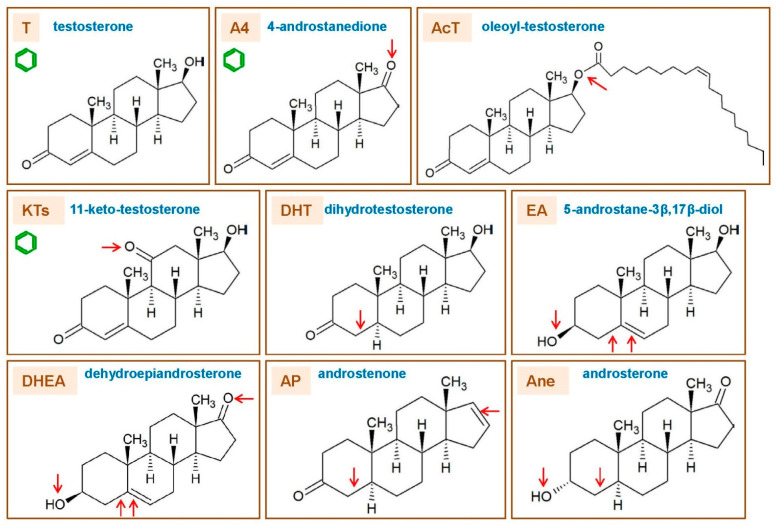Figure 2.
Types of human androgens. The androgen molecular species (or groups of them) show similar chemical structures, are synthesized in a number of different tissues (but mainly in adrenal glands and the gonads) and elicit physiological effects that are largely complementary. DHEA: dehydroepiandrosterone; T: testosterone; AcT: 17β-acyl-T, a group of esters; KTs: 11-keto-androgens (essentially derived from T, DHT and A4; the 11-keto forms are more active than the 11-hydroxyl ones); DHT: dihydrotestosterone; A4: 4-androstenedione; AP: androgenic pheromones; EA: estrogenic androgens (i.e., they bind to the ER and AR); Ane: androsterone—a catabolite of T—which is an agonist of the farnesoid receptor, acting in the regulation of bile acid signaling. There are many other androgen catabolism products and intermediate molecular species of the androgen metabolism, which specialized functions have not been described in depth, but have been studied as pharmacological subjects, metabolic markers or substrates for synthetic hormone production. The androgens susceptible of aromatization are marked with green benzene icons. Small red arrows point to the distinguishing structural features of the different groups of androgens in comparison with T taken as the standard and best-known androgen.

